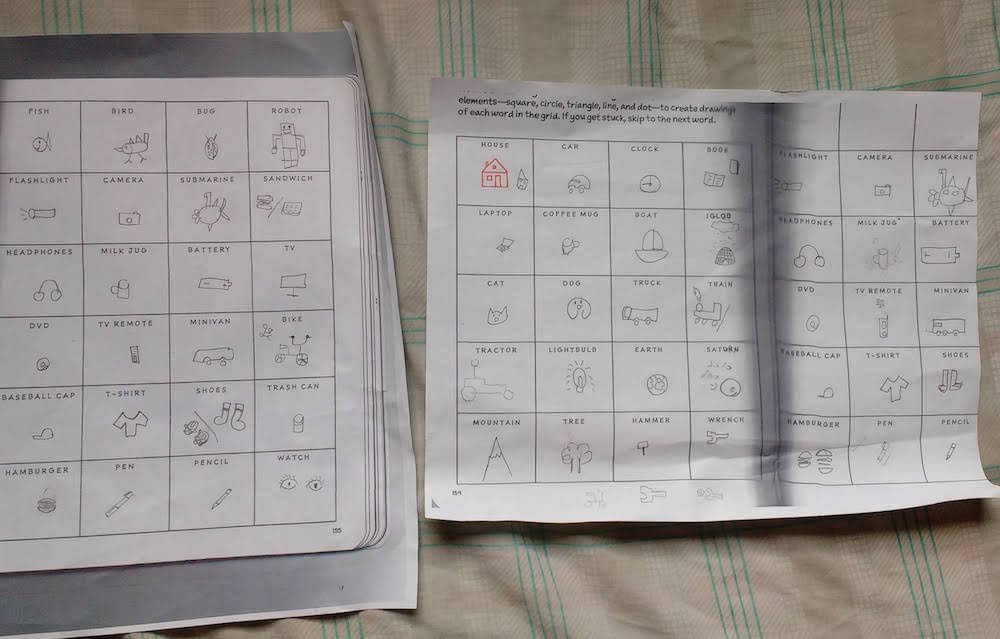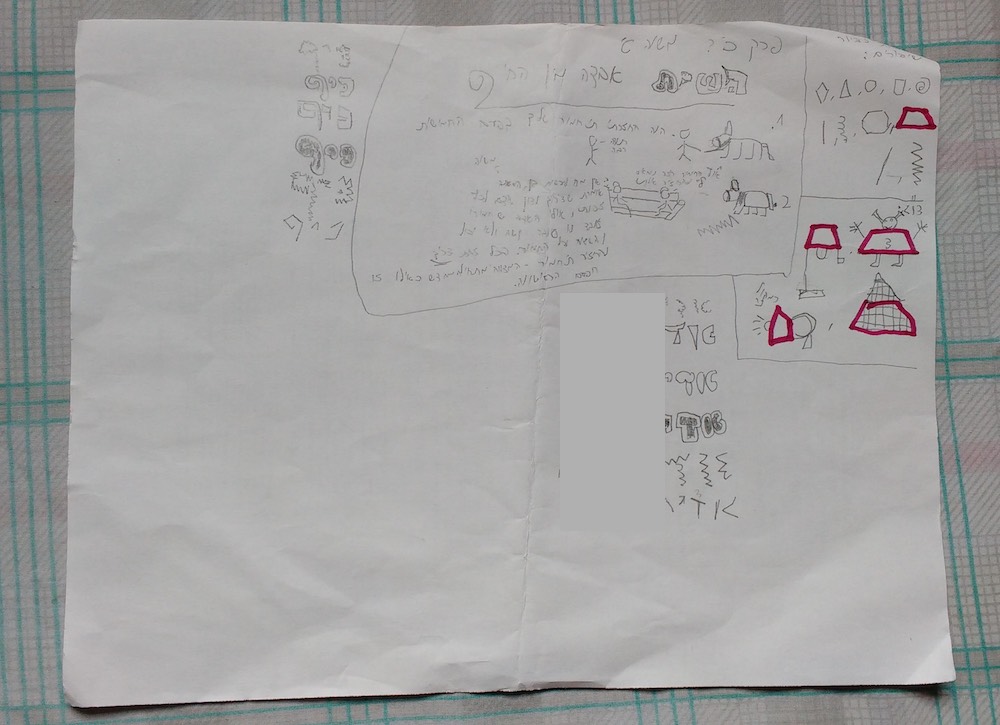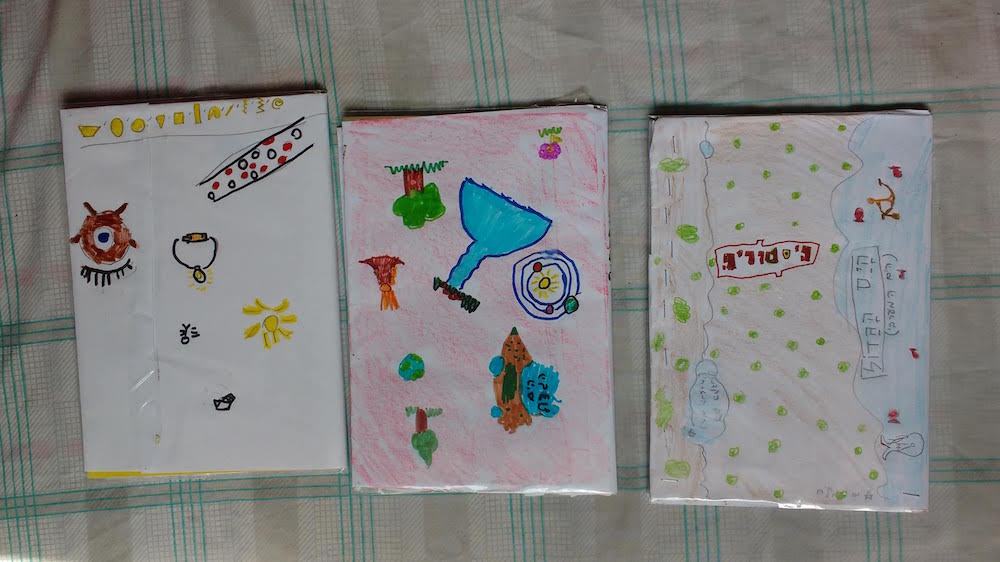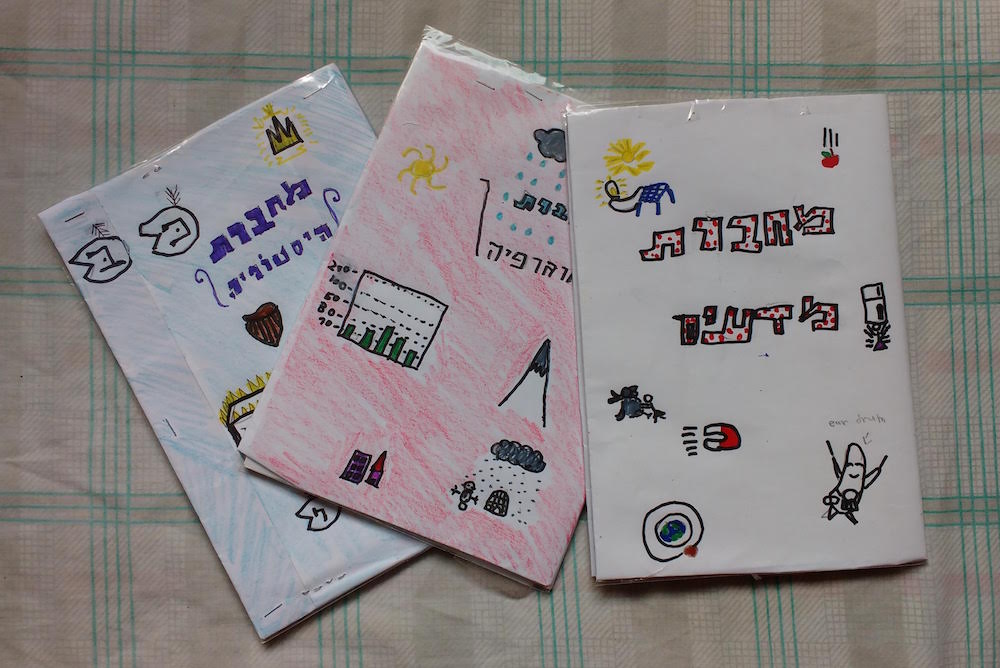Sketchnotes for Education Experiments
Around Hanukkah I posted some drawn notes that my son did, on his own, to record what he had learned about the laws of Hanukkah. At the time I loved the idea of sketchnotes for Jewish education, but I did not know there was a concept of sketchnotes at all.
Since then I discovered The Sketchnote Handbook by Mike Rohde and Visual Note-Taking for Educators by Wendy Pillars. Both talk about the value, cognitively, of using the visual in note taking to deepen understanding and recall. Pillars, additionally, shows how she has used visual note taking in her own classes.
Sketch-sperimenting
I decided to try an experiment with my kids and over the summer we started to look into how to use visual note taking in school. We started with an exercise from The Sketchnote Handbook. My daughter got really into it and printed out pages to come up with her icon library:

Applied to Jewish Education
We then did an exercise to sketch out a topic that might come up in school. We chose to use ideas related to Hashavat Aveida, returning lost objects. This was not a random choice. It was because we were watching Mishna Run’s HaChotem, The Seal. This series focuses, in a fun way, on issues that come up in the Mishnah regarding returning lost objects. My daughter chose a topic in the last episode she watched:

Here the question is dealing with what happens when you have returned an animal and it comes back. Do you have to return it again. You can see on the sides her experiments with different symbols and ways of writing texts.
To the Notebooks- Sketchnotes for Education
The experiments led to iconography for every subject in school. Some examples:


There are other notebooks as well. For Mishnah she also included Rav Rimon’s color coded methodology for interpreting the Mishnah. As you can see from the pictures, the icons relate to secular and Jewish studies topics. The pictures include geography, science and history. The history class is largely a Jewish history class. Note the harp to represent King David and a small detail representing the Temple.
Outcome
While she doesn’t use the methodology all the time, she likes to use it and finds it to be helpful in note-taking overall. It also helps channel possible day dreaming and boredom that can occur in any class.
That is, it helped, once we got over the hump of a teacher believing this was goofing off in class, not note-taking. Luckily I had lots of pictures to send (yay blogging!) and could send the teacher to the Visual Note-Taking for Education book, as there is now a copy in the school.
One thing that was helpful in creating the notebooks, was looking at the curriculum for her grade. Luckily there is a fairly universal curriculum per grade here, and we could look on the Ministry of Education website to get ideas of what to include. It was great fun to put together.
If you are an educator and decide to implement this, you won’t have to worry about misunderstanding the student note-taking. Lets here from you- have you tried sketchnoting for education in your classroom?

Add a Comment